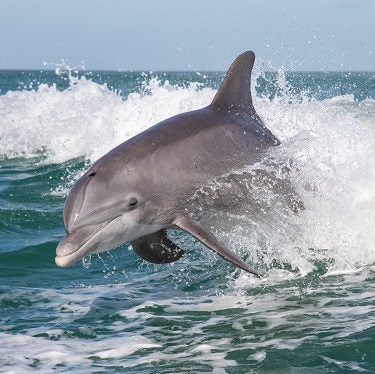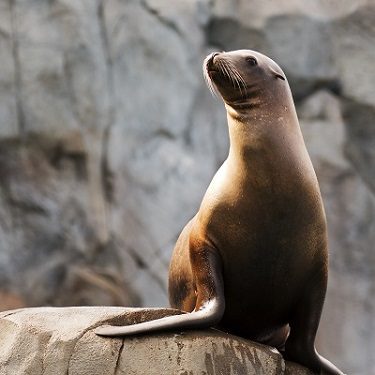Marine Life Encyclopedia
Sharks & Rays
Porbeagle Shark
Lamna nasus
Distribution
Worldwide in temperate to cold temperate waters
eCOSYSTEM/HABITAT
Coastal to open ocean (pelagic)
FEEDING HABITS
Active predator
TAXONOMY
Class Chondrichthyes, Order Lamniformes (mackerel sharks), Family Lamnidae (white sharks)
The porbeagle shark is a wide-ranging shark that’s recognized by its conical snout, white underbelly and dark gray top. Scholars have proposed that the porbeagle shark’s name originates from the combination of “porpoise” and “beagle” – referencing the shark’s rounded body and dogged hunting methods.
Porbeagle sharks are very active and have muscular bodies, giving them the endurance to seasonally migrate for feeding and reproduction. Porbeagle sharks are known to swim long migrations and have been tracked swimming up 1,242 miles (2,000 km) to give birth. Their high activity level could also be attributed to their endothermic (warm-blooded) system, which allows the sharks to maintain a body temperature that is higher than the surrounding water. Porbeagle sharks are found in the North Atlantic, southern Atlantic, Indian, and Pacific Oceans. They are not found in the North Pacific, but its close relative, the salmon shark, is found there. Porbeagles prefer cold, temperate waters and can be found at depths of more than up to 2,300 feet (700 m).
The maximum length of a porbeagle shark is approximately 12 feet (3.7 m) with a maximum weight of over 500 pounds (227 kg). Female porbeagle sharks are ovoviviparous (internal fertilization of eggs) and give live birth to an average of 4 pups at a time. Porbeagle sharks feed on their mother’s unfertilized eggs while in the womb, which is why females give birth to so few young. Juvenile porbeagle sharks prey on squid mainly, and shift to a primarily fish-based diet of mackerel, herring, hake, cod and dogfish as they mature. Unlike its larger relatives in the white shark family, porbeagle sharks do not prey on marine mammals.
Because of their size, porbeagle sharks do not have any known natural predators. However, their meat is highly valued by target fisheries in Europe, and porbeagles are a sought-after game fish species by sport fisheries in the U.S., New Zealand, Ireland, and the U.K. They are also vulnerable to becoming bycatch from longline, gill net, drift gill net, and trawl fisheries. This bycatch is often exploited for the porbeagle’s high-value meat, as well as its fins. Fishing pressure combined with a late age of reproductive maturity and few offspring per pregnancy, has contributed to making porbeagle sharks vulnerable to extinction.
Get Involved

Donate Today
SUPPORT OUR WORK TO PROTECT THE OCEANS BY GIVING TODAY
With the support of more than 1 million activists like you, we have already protected nearly 4 million square miles of ocean.

TAKE ACTION NOW
Support policy change for the oceans
Decision-makers need to hear from ocean lovers like you. Make your voice heard!

VISIT OUR ADOPTION CENTER
SYMBOLICALLY ADOPT AN ANIMAL TODAY
Visit our online store to see all the ocean animals you can symbolically adopt, either for yourself or as a gift for someone else.

DOWNLOAD OCEAN ACTIVITIES
HELP KIDS DISCOVER OUR BLUE PLANET
Our free KELP (Kids Environmental Lesson Plans) empower children to learn about and protect our oceans!



